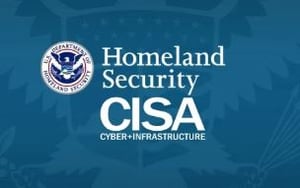 Christopher C. Krebs, Director of Cybersecurity and Infrastructure Security Agency issued a warning about a potential new wave of Iranian cyber-attacks targeting U.S. assets after Maj. Gen. Qassim Suleimani was killed by a U.S. airstrike at the Baghdad airport in Iraq.
Christopher C. Krebs, Director of Cybersecurity and Infrastructure Security Agency issued a warning about a potential new wave of Iranian cyber-attacks targeting U.S. assets after Maj. Gen. Qassim Suleimani was killed by a U.S. airstrike at the Baghdad airport in Iraq.
"Given recent developments, re-upping our statement from the summer," Krebs said in a rare warning on Twitter.
"Bottom line: time to brush up on Iranian TTPs and pay close attention to your critical systems, particularly ICS," he added. "Make sure you’re also watching third party accesses!" Here is the PDF.
"The Department of Homeland Security stands ready to confront and combat any and all threats facing our homeland," Acting Secretary Chad F. Wolf also said today in a statement.
"While there are currently no specific, credible threats against our homeland, DHS continues to monitor the situation and work with our Federal, State and local partners to ensure the safety of every American."
Well, that remains to be seen. Iran's APT33 tends to attack soft civilian targets with disk wipers that destroy your network. For example, APT33 was behind the infamous 2012 Shamoon attack on Saudi Aramco, an attack which erased the data on most of the company’s computers.
Every company in the SCADA and ICS space should all ready be proactive in safeguarding against these (and other) APTs; if we're doing our jobs right, then admins aren't in a state of emergency right now over the potential of Iranian implants lying dormant on our networks. It's also important to keep in mind US CERT's ongoing bulletins regarding Iranian cybersecurity threats, which consistently warn industry as to their go-to access methods - phishing attacks and password spraying. Critical infrastructure must remain vigilant and utilize security solutions such air gaping, deploying endpoint protections and training employees to spot and report social engineering and potential insider threats. More at Forbes.
 Here's how it works:
Here's how it works:




